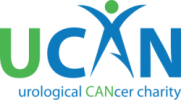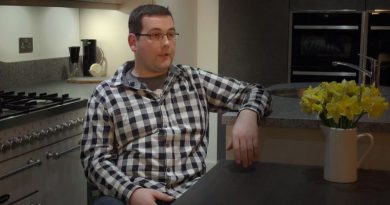Testicular cancer
How common is it?
Testicular cancer primarily affects young men in the 20 to 44-year old age group. Each year, there are nearly 2,000 new cases in the UK with over 20 cases per year in Grampian. The number of cases has been slowly increasing for some time. Testicular cancer responds particularly well to treatment, and over 98 in 100 patients are cured.
The cancer develops from the cells within the testes. The testes are the two small oval-shaped organs below the penis that produce and store sperm. They also provide the main source of the hormone testosterone, which is responsible for male sexual characteristics. If the cancer is not treated, cancer cells from the original site may break away and spread to nearby lymph nodes or, rarely, other organs.
What causes testicular cancer?
We do not yet understand what causes this type of cancer.
What are the risk factors for testicular cancer?
Unlike most cancers, testicular cancer does not get more common as you get older. Most cases occur in men aged between 20 and 45, with very few cases in men over 75. This type of cancer is common in white Caucasian males. Men of other races have a much lower incidence, even when living in the same country.
Babies born with undescended testicles are known to have a 5 to 10 times higher risk of testicular cancer. Having a vasectomy does not increase the risk of testicular cancer.
What are the symptoms?
There is no screening programme for testicular cancer, but self-examination helps to spot any changes early. Men and boys can screen for themselves by feeling for lumps in their testicles. Men from the age of puberty should self-examine each month. If a lump is found in one testicle, check the other one to see if the same lump is present. If there are similar lumps on both, then it is almost certainly a normal part of the testicles. If the lump is only on one testicle, you should consult your doctor. Testicular cancer is easier to treat successfully if detected early. Leaflets showing you how to check your testicles are available from the UCAN office on the contact details below, or call the NHS Grampian free healthline 0500 20 20 30.
The symptoms of testicular cancer include:
- a painless lump or swelling in either testicle
- enlargement of the testicle
- pain or discomfort in the testicle or scrotum.
- other, less common symptoms include enlargement of a testicle, a pain in one testicle and an ache in the lower stomach.
These symptoms may all be caused by conditions other than cancer, such as a cyst or infection. But it is important to contact a doctor if any symptoms occur.
Are there different types of testicular cancer?
The vast majority of testicular tumours are called germ-cell tumours. There are two main types of germ cell tumour: seminomas and teratomas. Younger patients are more likely to have teratomas and older patients to have seminomas.
How dangerous are testicular cancers?
There are relatively few deaths from testicular cancer, because it is one of the easiest to cure. In the year 2002, only 74 men died of this cancer in the UK. This means it is a very rare cause of death.
Does the diet affect the risk of testicular cancer?
There is no evidence that diet affects the risk of getting testicular cancer.
Does testicular cancer run in families?
Research has found that an increased risk of testicular cancer can run in families. If you have a brother with testicular cancer, you are between 6 and 10 times more likely to get it than normal. If your father had it, you are 3 or 4 times more likely than normal to also suffer from it.
How is testicular cancer diagnosed?
First, your family doctor will check your testicles and, if there is any cause for concern, he will refer you to a specialist. An ultrasound scan of the testicles is used to check for any growths. If any are found, an operation is performed to remove the testicle. This is examined by the pathologist to determine what type of cancer it is. Blood tests will also be done to check the levels of HCG (human chorionic gonadotrophin) and AFP (alpha fetoprotein), which help plan treatment and monitor the response of the cancer.
How is testicular cancer treated?
The exact treatment used will depend on the type of testicular cancer and how advanced it is. An operation to remove the affected testicle is normal in all cases. The loss of one testicle does not affect a man’s ability to have an erection or father children and an artificial testicle can be put in the scrotum to restore a normal appearance. If the cancer has gone beyond the testicle, radiotherapy or chemotherapy are also used. Radiotherapy is more effective for seminomas. Chemotherapy is used for both types of testicular cancer, even if it has not spread.
What are the side-effects of treatment?
Radiotherapy can cause nausea, tiredness and diarrhoea. However, these are not severe and can be helped or prevented by drugs. Chemotherapy can cause loss of appetite, tiredness, ringing in the ears, shortness of breath, nausea, vomiting, mouth ulcers, infections, kidney problems and hair loss. The higher the dosage, the more severe the side effects. Patients on high-dose chemotherapy are monitored carefully by their doctors.
How effective are the treatments?
The current treatments are very effective. If the tumour is diagnosed early, a complete cure is achieved in nearly 98% of cases. The later tumours are more difficult to treat, but even in advanced testicular cancer over 50% of patients are cured.
Is early diagnosis important?
As with all cancers, the earlier the diagnosis, the easier the cancer is to cure.




